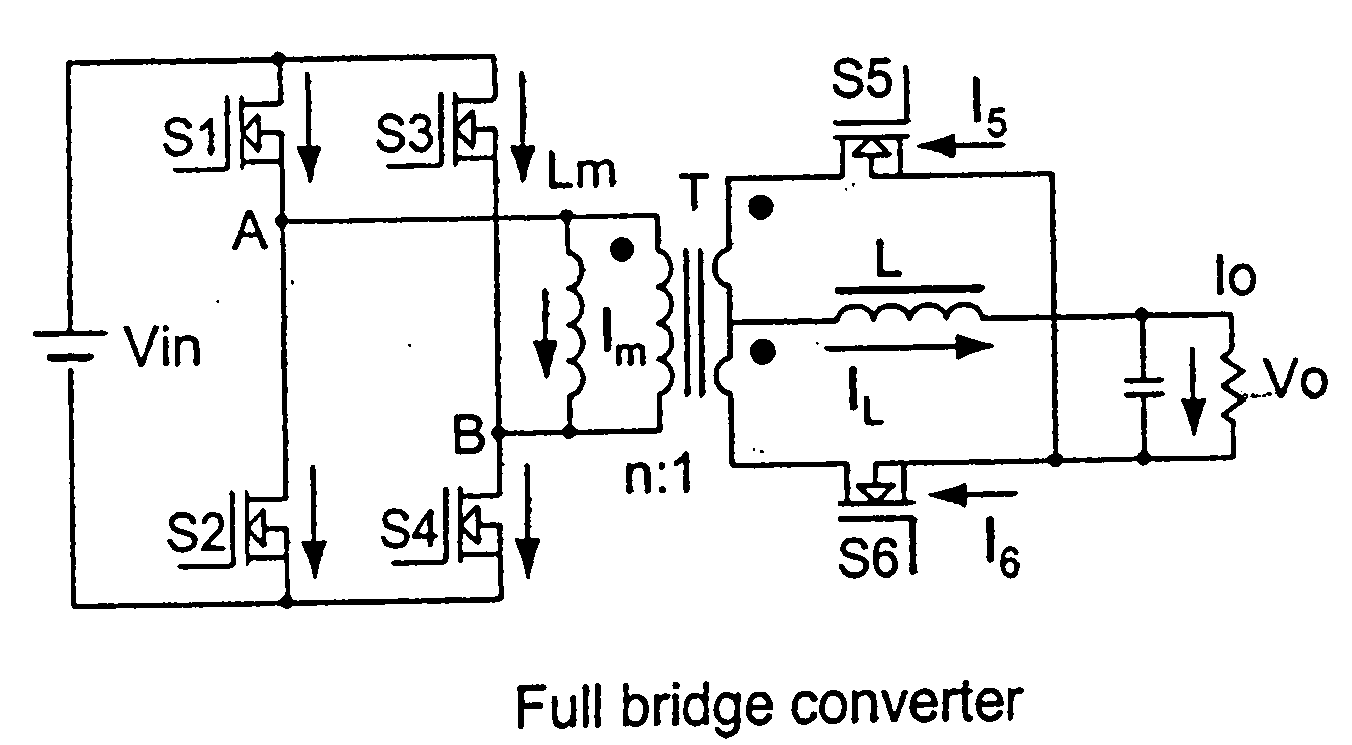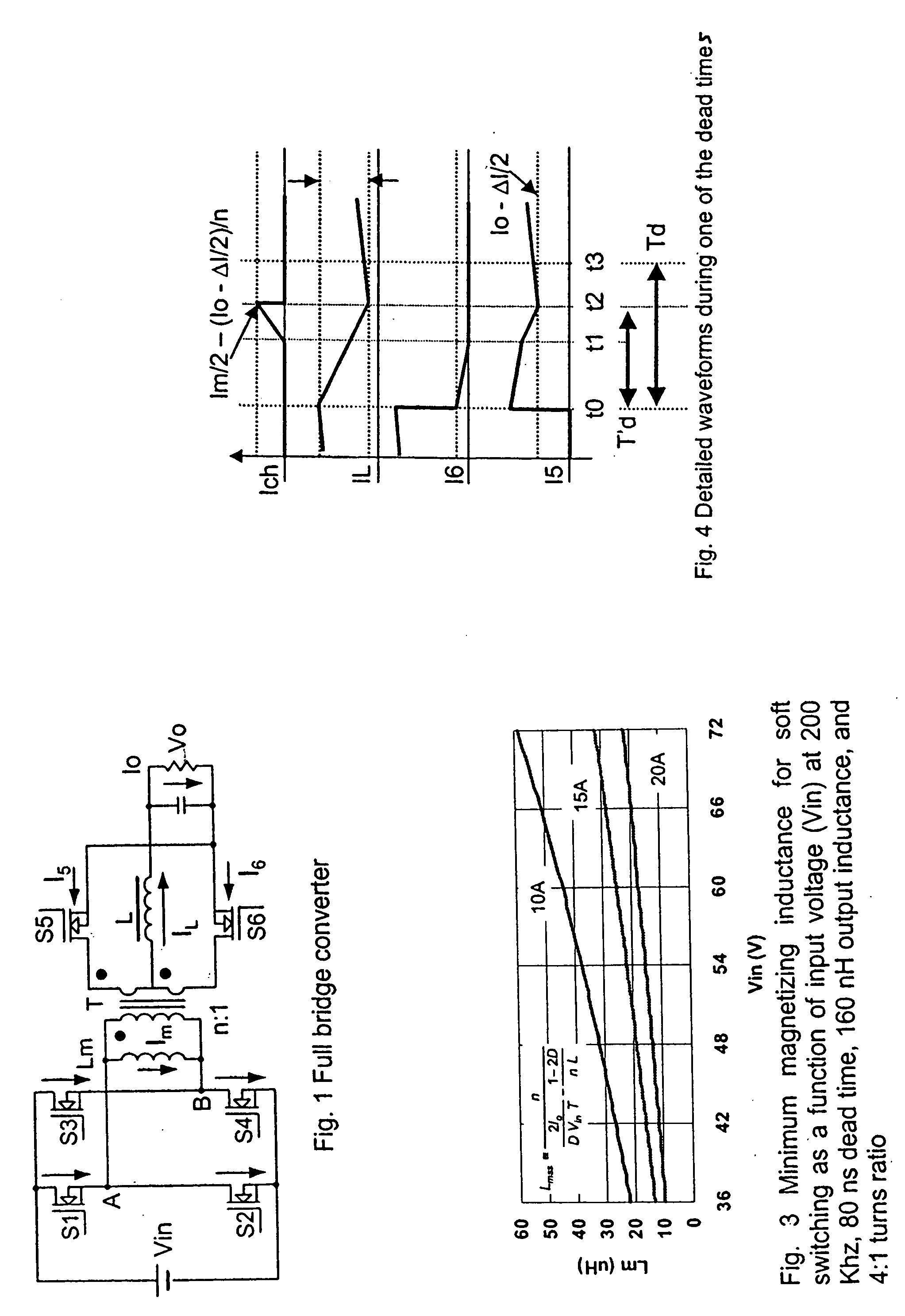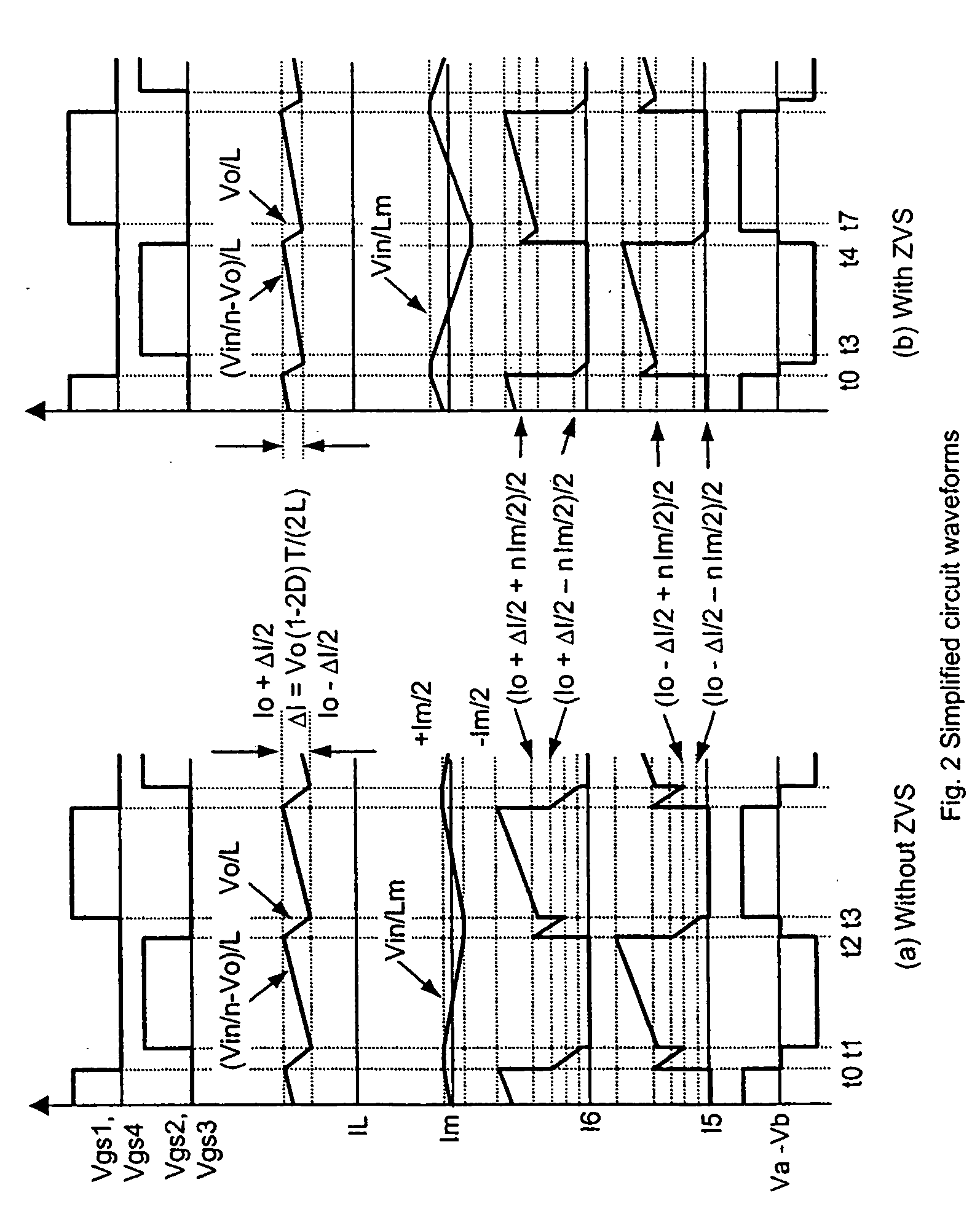Simple zero voltage switching full-bridge DC bus converters
a converter and full-bridge technology, applied in the direction of electric variable regulation, process and machine control, instruments, etc., can solve the problems of inability to give efficiency data, additional power loss, and difficulty in getting timing control signals during the short period, so as to reduce the power loss of the primary fet, reduce the loss of turn-on switching, and increase the conduction loss
- Summary
- Abstract
- Description
- Claims
- Application Information
AI Technical Summary
Benefits of technology
Problems solved by technology
Method used
Image
Examples
Embodiment Construction
[0031] An isolated full-bridge dc-dc converter with self-driven secondary synchronous rectification is shown in FIG. 1. FIG. 2(a) shows simplified circuit waveforms for a normal hard-switched operation, without ZVS. These waveforms assume that S1 and S4 have the same pulse width (Vgs1 and Vgs4) as S2 and S3 (Vgs2 and Vgs3). Therefore, the magnetizing current is symmetrical. The input and output capacitance is assumed very high, so that output inductor current ripple changes linearly, and is in continuous conduction mode.
[0032] In the hard-switched case of FIG. 2(a), the primary magnetizing current moves to the secondary side during the dead time, and it does not commutate back to the primary side until the beginning of the next switching cycle. During the dead time, the transformer windings are shorted, and the current flowing through the secondary windings can be calculated from the following two equations: I5-I6=nIm2(1)I5+I6=IL(2)
[0033] In (1) and (2), IL is the inductor current...
PUM
 Login to View More
Login to View More Abstract
Description
Claims
Application Information
 Login to View More
Login to View More - R&D
- Intellectual Property
- Life Sciences
- Materials
- Tech Scout
- Unparalleled Data Quality
- Higher Quality Content
- 60% Fewer Hallucinations
Browse by: Latest US Patents, China's latest patents, Technical Efficacy Thesaurus, Application Domain, Technology Topic, Popular Technical Reports.
© 2025 PatSnap. All rights reserved.Legal|Privacy policy|Modern Slavery Act Transparency Statement|Sitemap|About US| Contact US: help@patsnap.com



